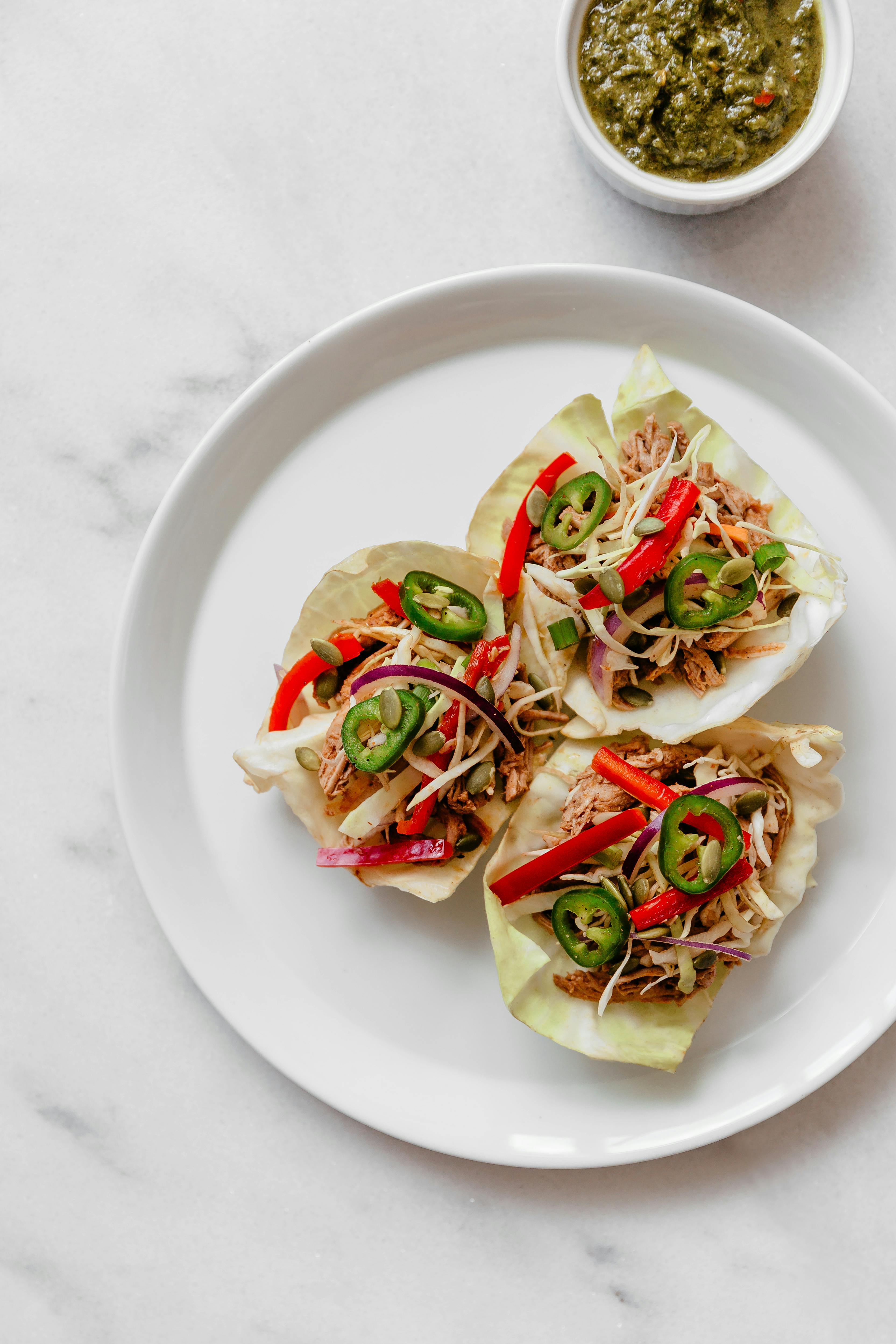
Gut Check Part 2: Let The Healing Begin
By Carina Morgan
August 15, 2019
In the Gut Check: Part 1, I detailed the experience that led to my gut health diagnosis and shared next steps around what my healing process would look like. It’s been about eight week since discovering what’s going on with my digestive system and created a plan of attack with my functional medicine practitioner. So, circling back to give you a peek into what it looks like to make some major lifestyle shifts in order to heal the body from the inside out.
The Protocol
- Combination of three antibiotics to cure the Small Intestine Bacterial Overgrowth (SIBO)
- A major diet change to prevent relapse and reduce symptoms
- Supplements to promote a healthy gut and reduce intestinal inflammation for Inflammatory Bowel Disease (IBD)
- An incredibly potent digestive enzyme to support my pancreas since diagnosed with Exocrine Pancreatic Insufficiency (EPI)
Below I share specifics about what I’m personally doing, and please keep in mind that you should always check with your doctor before starting any kind of prescription, dietary, or supplementation protocol.
To heal SIBO
My doc put me on two prescriptions that work together to kill the bacteria hanging out in my small intestine. There are two types of bacteria that can cause SIBO – one that produces hydrogen gas, and another that produces methane gas, which are what cause the digestive symptoms.
The combination of Rifaximin and Neomycin have been shown in clinical studies to effectively combat both types of bacteria. My doc also gave me diflucan, since occasionally killing the bacteria can cause a buildup of intestinal yeast. This was a two-week prescription protocol.
Interestingly, it appears that SIBO is a symptom, not a cause. There are several underlying issues that play a role in the development of SIBO, and to prevent relapse, those root causes need to be addressed.
Two common issues are slowed gut motility and pancreatic insufficiency. To help support these processes, I started taking low dose erythromycin, which is shown to improve gut motility (there is an herbal protocol to support this as well, and I will likely shift to that soon), and some pancreatic enzymes to support pancreatic function.
Eating with SIBO

Once the antibiotics were completed, I was to begin a low carbohydrate diet to help prevent relapse, since these bacteria in particular feed off of carbs and sugars. I also tried to eat as few FODMAPs as possible. The goal is to stick with this way of eating for at least 3 months, before introducing foods back to test how they affect the body.
I also had to space out my eating to every 4-5 hours, which basically means 3 square meals per day (no snacks) to support gut motility and the Migrating Motor Complex. This was challenging for me, as I have been a “grazer” for most of my life, and feel better eating small quantities at a time, but more frequently. The good news, I was able to use Territory’s Low Carb filter to fill in most of my lunches since it avoided most of the starches I couldn’t have.
To Support EPI
Exocrine pancreatic insufficiency is a little more chronic than SIBO, and right now the only enzymes strong enough to truly aid in pancreas enzymatic function is a prescription enzyme called Creon.
Creon is extremely powerful and, when combined with hydrochloric acid, can help ensure food is getting broken down properly.
To Manage IBD
My diagnosis of IBD indicates an autoimmune inflammatory problem in my GI tract, and therefore the management of it involves reducing intestinal inflammation as much as possible. Along with eating a diet that supports an anti-inflammatory response, taking some supplements to combat inflammation are part of the routine as well.
From a dietary standpoint, as someone with Celiac Disease, I’ve been avoiding gluten for a decade, but I also focused on eliminating dairy, preservatives, sugar, and soy. I always take Vital Proteins Collagen Peptides to support my intestinal lining as well – I’ve been doing this for years, my doc is very pro-collagen, and so I continued taking this.
I also introduced an enteric-coated peppermint supplement to soothe my digestive system, as well as L-glutamine, which is implicated in reduced intestinal inflammation.
These changes are long-term shifts, since IBD is a chronic autoimmune illness, so I’ll be on this protocol for at least three months before re-evaluation.
To Eliminate Parasites
The last component I had to treat was a parasitic infection. We all have parasites, but occasionally, they can become prominent enough in the body where they actually produce physical symptoms.
To treat this infection, I took a supplement called Para1 which contains mimosa pudica, a plant that can paralyze parasites, aiding in the elimination of them in the body. This can cause some die-off symptoms, so I also took a binder called Viralchem, which helps to bind the toxins being released from the parasites as they die, reducing the die-off symptoms. These were to be taken for a month.
Let's Talk Implementation
In order for me to keep track of all of this, I created a little checklist for myself to remind me what I needed to take and when. I also became a little more cognizant about planning ahead for grocery shopping and meal prepping, so I always had something compliant ready to eat. I also always had a stash of Territory Low Carb meals so I wasn’t stressed about prepping every single meal, and always had a backup plan.
The first few days I had a tough time getting the supplement routine down and making sure I always had what I needed if I wasn’t home. I got into my groove pretty quickly, and luckily didn’t experience a whole lot of side effects from the protocols I implemented.
The diet portion of this plan was the most difficult for me because it felt really restrictive (I love carbs) and my husband and I love going out to eat, and that became much trickier. I got used to it but, truthfully, it was a huge bummer for me.
I also had to shift my normal CrossFit exercise routine, since my body doesn’t deal with high intensity exercise well when it is carb-depleted, and that also made me a little sad. I stopped doing traditional CrossFit conditioning workouts every day and incorporated more weightlifting/strength work; I also cut down the number of days I exercised since my body was working harder to recover. Reminding myself that this wasn’t forever and it was for a good reason helped me to keep going with this component of the protocol!
And the results...
- I finished the first set of antibiotics and then retested my SIBO levels; while I felt around 65% better after the first round of treatment, I ended up having to take another round of the Rifaximin & Neomycin combination to get the bacteria under the diagnostic threshold.
- I now feel significantly better with my GI symptoms; I would say I am 90% better. The anti-inflammatory supplements are likely helping with this too.
- The Creon has been helping tremendously with digestion, and I no longer feel sick, bloated, or lethargic after eating meals.
- Overall, I no longer feel bloated or distended after eating, I don’t experience GI distress after eating or when stressed the way I used to, and I overall feel less inflamed. This has also improved my mental health, energy, and mood.
I 100% believe that this journey was worth it, and that our health truly is our greatest gift. Now that I feel so much better, I can’t imagine how I lived the way I did for so long. I have a new standard, and I also have protocols in place if I ever begin to experience the same symptoms again.
I also feel indebted to my functional medicine practitioner, and am so thankful I have a medical professional who really looks at my whole body as a system. Everyone deserves to have somebody care about their entire being like that.
If you’re putting up with uncomfortable GI symptoms, you may want to consider finding a functional medical doctor to help you uncover what’s going on in your gut so you can take steps towards feeling your best. You can Google for functional practitioners in your area, which is a great place to start.